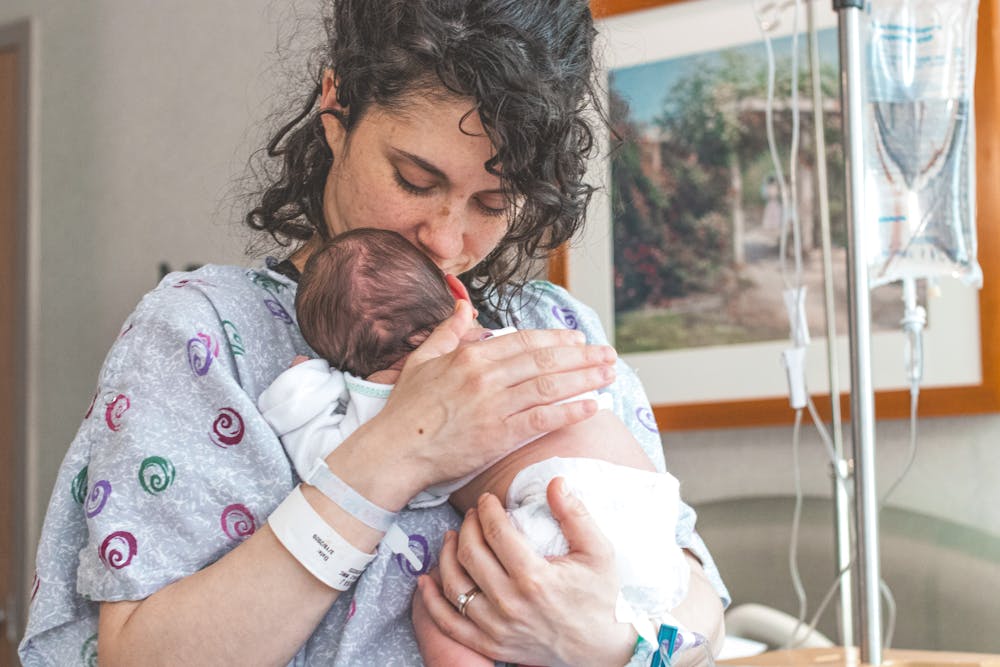The Complete Manual for Changing a Newborn’s Diaper
Welcoming a newborn into your life offers enormous joy, but it also comes with a list of duties. Among the first skills new parents must grasp is nappy changing. With the correct strategy and a little practice, you’ll quickly become an expert, even though it could seem overwhelming at first. In addition to providing practical advice to help the process go more smoothly, this book will take you through every step of changing a newborn’s diaper, from planning to actualization.
Why Frequent Nappy Changes Are Essential
Because newborns’ skin is so sensitive, changing their diapers frequently is essential to avoiding discomfort and rashes. The following are important justifications for keeping up with diaper changes:
Prevents Diaper Rash: Wet and soiled nappies can cause irritation, leading to rashes.
Maintains Your infant’s Comfort: A dry infant is a contented baby, which lessens fussiness.
Lowers Infection Risk: Bacterial and fungal infections can be avoided with clean diapers.
Prevents Leaks and Mess: Changing your baby’s clothes frequently keeps them dry and helps avoid mishaps.
How Often Should You Change a Newborn’s Nappy?
Newborns normally need their nappies changed every 2-3 hours or immediately after they soil them. Depending on your baby’s bowel motions and the frequency of feedings, this translates to 8–12 diaper changes each day.
A Comprehensive Guide on Changing Your Infant’s Diaper
1. Gather Your Supplies
Keeping everything close at hand will speed up and improve the efficiency of changing diapers. What you need is as follows:
Clean nappy (disposable or cloth)
Warm water and a soft washcloth or baby wipes
Nappy rash cream (optional but recommended)
Changing mat is a spotlessly level surface
Throwaway diaper bag or container
Hand sanitizer (for after changing)
2. Pick the Proper Site
A clean and safe surface is crucial. A bed or floor with a fresh towel or changing pad underneath is another option, however many parents choose a changing table. To avoid falls, always maintain one hand on your infant when using an elevated surface.
3. Remove the Dirty Nappy
Lay your baby down on the changing surface.
Holding your baby’s ankles, carefully raise their legs while undoing the diaper tabs The Complete Manual for Changing a Newborn
If the diaper is dirty, use the front to wipe away extra waste The Complete Manual for Changing a Newborn
Place the soiled diaper aside after folding it in half, clean side up The Complete Manual for Changing a Newborn
4. Wash the infant’s skin
To gently clean the area, use baby wipes or a gentle washcloth soaked in warm water.
To avoid infections, always wipe from front to back, especially on infant females.
Before putting on a new diaper, make sure the skin is totally dry The Complete Manual for Changing a Newborn
5. If necessary, apply diaper rash cream.The Complete Manual for Changing a Newborn
Applying a small coating of barrier lotion to your baby’s sensitive skin can help prevent them against diaper rash.
6. Change the diaper The Complete Manual for Changing a Newborn
Place the clean nappy under your baby’s bottom.
Between their legs, pull the front of the diaper up.
Make sure the diaper tabs are snug but not too tight.
7. Get Rid of the Unclean Diaper
The used diaper should be wrapped and disposed of in a disposable bag or diaper bin.
Wash your hands thoroughly afterward.
Selecting Your Baby’s Ideal Nappy
Comparing Disposable and Cloth Nappies
A feature
Cloth Nappies
Throwaway Napkins
The price
Long-term more economical
Increasingly costly over time
Practicality
needs to be cleaned.
Simple to use and get rid of
Effects on the Environment
environmentally friendly
increases the amount of garbage in landfills
The capacity to absorb
Less absorbent, needs to be changed often
Highly absorbent
Sensitivity of the Skin
Less chemicals and gentler on the skin
Certain brands could irritate you.
Both choices offer advantages, and many parents decide to combine the two.
Typical Problems with Changing Diapers and Their Fixes
1. Handling diaper rash
Regularly change diapers.
Before changing your baby’s diaper, let their skin air dry.
Apply a gentle barrier cream without any scent.
2. Nighttime Nappy Leaks
Make use of overnight diapers made with additional absorbency in mind.
Make sure the diaper fits comfortably but snugly.
For added protection, think about using a diaper booster pad.
3. The infant detests changing diapers.
For distraction, keep a toy close at hand The Complete Manual for Changing a Newborn
While changing your baby, sing or talk to them.
To make the experience more comfortable, use warm wipes.
FAQs Regarding Changing Your Infant’s Diaper The Complete Manual for Changing a Newborn
Q: How do I know when my baby needs a nappy change? A clearly full or drooping diaper, fussiness, and sobbing are all warning signs.
Q: Can I use baby powder during nappy changes? A: It’s not suggested, as powders might irritate your baby’s lungs if inhaled.
What is the ideal nappy tightness? A: Not too tight, but snug. You should be able to fit two fingers between the nappy and your baby’s tummy.
When should I change to the next size of diaper? A: You should size up if you see leaks, red spots on the skin, or trouble fastening The Complete Manual for Changing a Newborn
Concluding remarks
For every parent, learning how to change a newborn’s diaper is a crucial skill. A seamless and stress-free experience can be guaranteed by employing the appropriate methods, using high-quality supplies, and paying close attention to your baby’s demands. Nappy changes will eventually become second nature, adding to the specialness of those early times spent bonding with your child.







